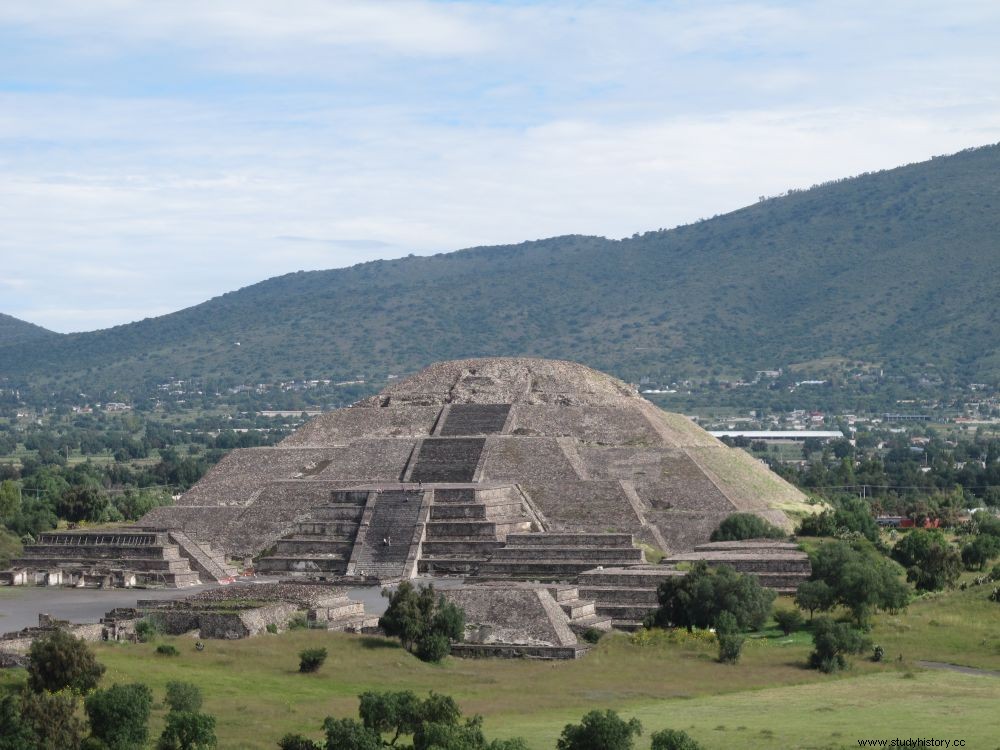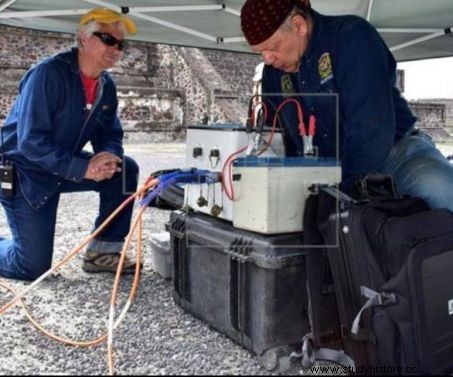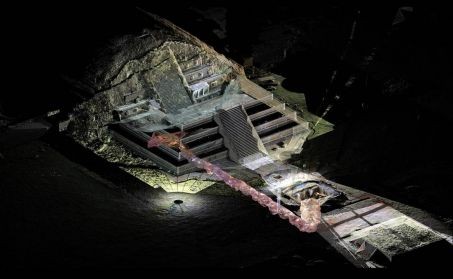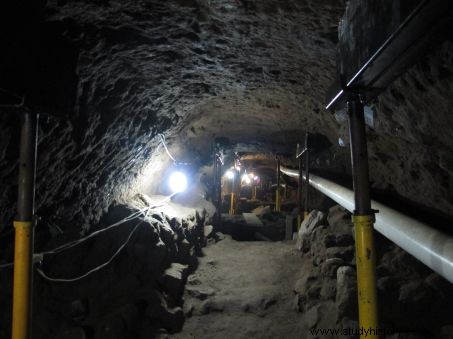Mexican experts have detected the presence of an unsuspected tunnel near the Pyramid of the Moon, one of the emblematic monuments of the Teotihuacan site in Mexico.

The Pyramid of the Moon and its large plaza, at the archaeological site of Teotihuacan, northeast of Mexico City, the capital of Mexico.
Enigmatic galleries. An unknown underground passage has been identified near the Pyramid of the Moon, at the site of Teotihuacan, the ancient City of the Gods, in Mexico. Archaeologists from the National Institute of Anthropology and History (INAH) detected its presence between Place de la Lune, a small esplanade, and the imposing monument of the same name, thanks to electrical resistivity tomography measurements. carried out in early June 2017, as announced on July 5, 2017, Inah archaeologist Veronica Ortega, director of the "Plaza de la Lune Integrated Conservation Project ". This corridor would have been located about ten meters below the surface. Ignored for 2000 years, it nevertheless bears witness to a construction scheme widely used by the ancient residents of Teotihuacan.

Inah archaeologists taking resistivity measurements after placing electrodes in the ground. © Inah
These finds indeed confirm that the pyramid of the Moon, as much as that of the Sun and the temple of Quetzalcoatl, said of the Feathered Serpent, all had underground galleries! In the 1970s, the first of these corridors was found looted under the Pyramid of the Sun. Closer to us, the Temple of Quetzalcoatl or the Feathered Serpent, on the other hand, has kept its promises with the discovery of many archaeological treasures (read Sciences et Avenir n° 805 ). Located 12 meters deep, sealed between 200 and 250 AD, this tunnel accidentally revealed by Sergio Gomez (Inah) under the stepped building studied from 2009 to 2016, was full of thousands of rich offerings, jade statuettes, ceramics, and seashells, not to mention the amazing presence of mercury in the bowels of the monument. However, no royal tomb has been found there. That of the first lords of Teotihuacan, so sought after.

3D image of a previous tunnel discovered under the Feathered Serpent Pyramid, Teotihuacan. © Sergio Gomez/Inah

At a depth of 18m, the interior of the 103m long tunnel of the pyramid of Quetzalcoatl, during excavations from 2009 to 2016. © Bernadette Arnaud
Other false hopes concerning these leaders had already been raised in 1998, during the discovery, at the time in the foundations of the Pyramid of the Moon, the same building near which a new unknown conduit has just been reported. There, in narrow trenches, the remains of sacrificed individuals had been unearthed. Four men lying on the ground, their arms tied behind their backs surrounded by prestigious offerings:figurines, shells, conches, jaguar and falcon bones, as well as numerous objects referring to war, such as obsidian blades and arrowheads. Some victims wore a butterfly-shaped nose ornament. Precious vestiges then torn from the silence of the mythical pre-Columbian city by Saburo Sugiyama, professor at the University of Aïchi (Japan), and the University of Arizona (United States) as well as Ruben Cabrera Castro, of the Institute National of Anthropology and History (Inah) of Mexico.
Located 50 kilometers northeast of Mexico City, Teotihuacan is on the World Heritage List. Populated at its peak by about 100,000 souls, the pre-Columbian city was between 200 and 700 AD, the largest urban center in Mesoamerica. Its architectural plan was organized around the Miccaotli , an Alley of the Dead, dominated to the north by the pyramid of the Moon, and halfway, by that of the Sun, one of the largest in the world. To the south, the Citadel, enclosed the Temple of the Feathered Serpent, Quetzalcoatl. The reasons for its mysterious abandonment around 700, well before the arrival of the Aztecs, which will not take place until the 14th century, have still not been elucidated. Nor the origin of its builders clarified. The Teotihuacan site still remains an enigma. As evidenced once again by the existence of this new tunnel.
